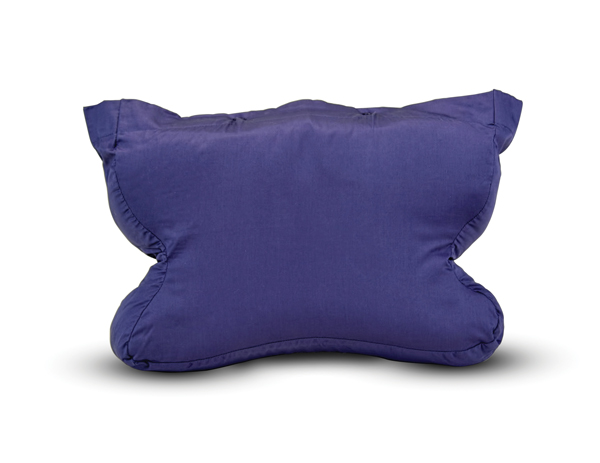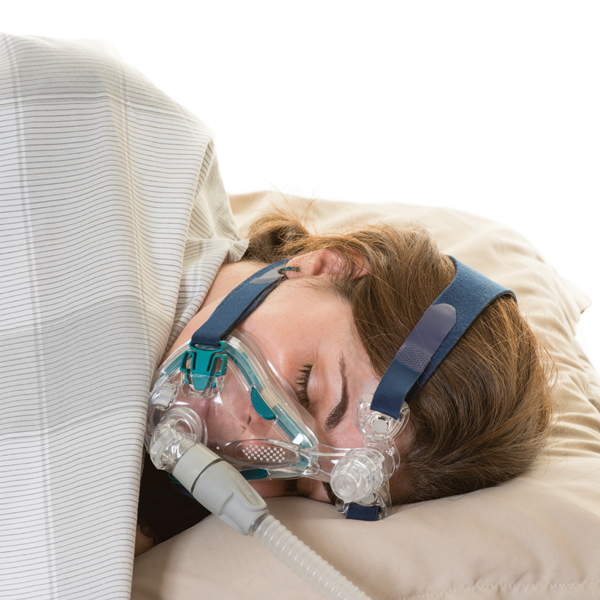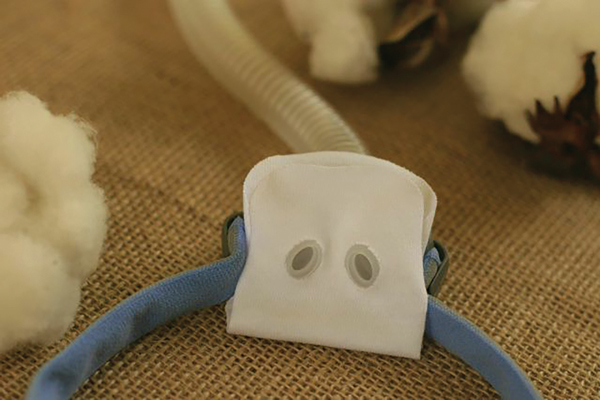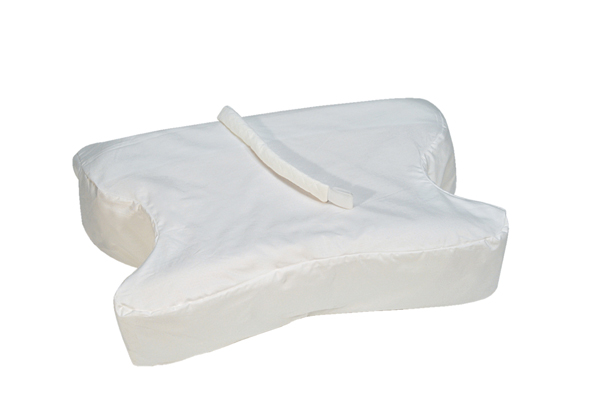Age, obesity and a greater public awareness of the importance of sleep has led to a steadily growing number of Americans who are tested and treated for sleep apnea. Treatment is moving out of the specialized arena and into more mainstream discussions. As a result, there will be more people diagnosed, more people looking to research their options and more potential customers for the savvy HME provider.
 Contour Products
Contour ProductsAdjusting for Comfort
"CPAP therapy is often a difficult adjustment for those newly diagnosed with Obstructive Sleep Apnea (OSA), and patients and HMEs have asked for easier and smaller masks that can ease the adjustment to CPAP therapy," says Mark D'Angelo, sleep business leader at Philips Respironics. Philips Respironics—a total-solution provider that offers a range of sleep diagnostics, sleep therapy devices, masks and customer support tools—recently introduced the new Pico nasal mask. The Pico addresses both patient and provider requests regarding the weight and size of sleep equipment, as it is the lightest and smallest traditional nasal mask currently on the market. Another company, Naturs Design Inc., is responding to the patient and HME call for more—and better—CPAP options. While still offering full-face and nasal RemZzzs mask liners, they now have a liner for the nasal pillows mask. "Some patients are not able to tolerate a full face or nasal mask, but find the nasal pillows to be less cumbersome," explains Robert Rutan, developer of RemZzzs and CEO of Naturs Design Inc. The new RemZzzs liner stretches over the pillow, providing a more secure fit and better protection for the sensitive skin of the nostrils and upper lip area. According to Rutan, RemZzzs's innovation has increased individual patient compliance greatly by making the mask more comfortable to wear, protecting the facial skin and increasing the number of hours worn each night. "Understand that it isn't going to be one size fits all," says Breana Jones, director of marketing, Contour Products. "As more people are diagnosed, it's going to become increasingly important that there are options to meet the different demographics using the products, and that customers find products that fit their lives. They don't want 'medical' devices; rather they want solutions that work for them in all ways." Contour Products, a manufacturer of pillows and a line of accessories that make CPAP therapy easier for users, now offers a line of pillowcases in a variety of colors specifically for their CPAPMax pillow. "These comfortable, aesthetically pleasing cases allow them to obtain the benefit of using the pillow while having it blend into their existing lifestyle. The cases allow the pillow to hide in plain sight."
Reporting, Compliance and Difficult Reimbursements
"Sleep, unlike other areas of DME, requires considerable patient hand-holding to get compliance numbers up," says Angela Giudice, clinical education manager, 3B Medical Inc. "Patient touchpoints and feedback are important. Our primary concern with declining reimbursement is the impact this may have on a reduced level of patient care due to necessary cost cutting. 3B has been first in working with DMEs to reduce product costs to enable them to maintain necessary margins and prevent staff reductions." 3B provides a full line of PAP therapy devices, including standard CPAP, auto CPAP and auto bi-level devices, along with mask interfaces. The newest product offering from 3B Medical is an auto bi-level (BPAP) device, called the RESmart 25A. "It blends the advanced clinical efficacy reporting with patient comfort features, while significantly increasing DME margins," says Giudice. Regarding future innovation, the RESmart 25A is just the tip of the iceberg. "The major areas of innovation all center on compliance reporting technologies—how to monitor patient adherence and relay that information to the clinician automatically," she adds. "Major work is underway in bringing together multiple connectivity options, which would allow patients to configure devices for cellular, Bluetooth or wireless connection." As HME providers face a tough competitive bidding environment—in addition to lower Medicare reimbursement rates and more extensive compliance regulations—they must be willing to adjust to the new market in order to see a profit. —In the area of sleep therapy, the direct and pending impacts of CB2 are significant drivers for the need for change," says D'Angelo. "The ever-increasing documentation required for reimbursement—particularly as it relates to outcomes evidence for PAP therapy, patient management, and resupply—has further eroded providers' efficiency and profitability." To overcome these challenges, D'Angelo adds, home care providers and others involved in the OSA care cycle will have to work together differently and leverage connected health technology to find new ways of delivering effective patient care to those with OSA. "To offset these mounting obstacles and thrive in the changing homecare environment, HMEs will need to turn toward connected health solutions to manage their businesses more efficiently and effectively and bolster patient compliance." Rutan agrees. "I believe we will see more products not covered by insurance, and patients will need to pay out-of-pocket. This will create a situation where patients must choose between their daily living expenses instead of continuing CPAP therapy, leading to a greater expense to Medicare and other insurances in the long run. As we've already seen, many DME/HME companies have gone out of business or have discontinued selling CPAP equipment and supplies. It is trending more toward a cash market, or insurances will cover fewer masks & supplies each year per patient." Vendors are also realizing that they have to reduce the cost of goods to ensure continued movement of their lines, while private insurers are following Medicare's lead with lower reimbursements. With the huge reduction of HME providers still in business or that have a bid, the available base of providers for a patient, especially a Medicare patient, has been greatly reduced. Others advise a more hopeful outlook—as long as providers are willing to adapt to the market. "As products become smaller, better looking, and more comfortable, we should see better compliance and therefore long-term users," says PJ Hsueh, president of APEX Medical, a manufacturer of CPAP and APAP machines and masks. "Our Wizard 230 nasal pillow mask was designed to meet the increasing demand for nasal pillow masks in a lower reimbursement environment. We have been able to produce a very high quality and good looking mask at a lower price point than our competitors, and have also managed to keep the price of replacement parts low, too." The Wizard 230 nasal pillow mask was designed with the optimal sleep quality of the user in mind, with minimal facial contact and a clear field of vision.
One-Stop Supply Shop
The sleep therapy market will continue to grow alongside increasing obesity and a larger aging population in the coming years—thus, if HME providers can find a way to stay competitive in the new market, there is a ready profit to be made. "With competitive bid and reduced reimbursements, the struggle for HME providers is to find effective, efficient means to handle the volume of patients being forced to those that received the bid, and do it profitably," says Russell Parker, chief operating officer at Revsuppliance, a company that specializes in CPAP resupply solutions for HME providers. "2015 is a crucial year for most HME providers because it is the last opportunity to pursue any avenue of potential revenue and maximize on what they can before lower reimbursements hit and competitive bidding affects everyone in 2016. Live resupply is probably the most effective and important avenue in regards to obtaining recurring revenue, excellent patient care and compliance."
 RevSuppliance
RevSupplianceParker suggests that as new technologies hit the horizon, compliance will become easier for patients and providers to obtain. Revsuppliance is a one-stop shop, unlike most other comparable services that have to work collectively with other companies to provide a successful end results. Once a sleep patient is set up and compliant, Revsuppliance takes care of resupply needs via live calls—picking, packing and shipping, all with delivery confirmation, from their single location in Oklahoma. "Our proprietary software was developed specifically for tracking patients based on their insurance allowables. This ensures that we are maximizing profit on every single product we successfully ship out the door and guaranteeing a billable ticket for the provider," explains Parker. "HME providers can be more successful in the sleep market in 2015 by implementing a strong resupply program for two reasons," he adds. "First, this is a vast untapped revenue stream for most providers. They realize that they are leaving money on the table, but some don't realize how much. Or, they don\'92t have the time, technology, or man-power to do it on their own. Second—and most important—is that it significantly improves the level of patient care. Most patients either aren't properly educated on when to change their supplies, or they forget. It is important to keep continuous communication with the patients so you don't lose them."
 Naturs Design Inc.
Naturs Design Inc.As in many areas of HME, automation serves as a profit-driver—often guaranteeing the provider an income they may not otherwise see—and a convenience for the customer, as well. D'Angelo feels that HME providers have a significant opportunity to automate and standardize operations, helping reduce manual and administrative tasks and keeping the right people connected to the right information at all times.
 Contour Products
Contour Products"A compliant patient requires long-term services, and HMEs can employ connected health technology to bolster patient compliance and sustain long-term patient needs. For the patient, these types of solutions can help to drive motivation, increase compliance, and can even enable self-help when patients are seeking details and tips for using their therapy device and mask." On the operations side, D\'92Angelo says, connected health tools that feature risk-scoring algorithms can also help identify at-risk patients who can be targeted for interventional management. This enables the HME providers to focus on the patients that need the most assistance, while reducing high-touch follow-up with those who have adjusted well to therapy. "Many new CPAP patients will be totally new customers to the HME," says Hsueh. "These new patients give HMEs an opportunity to develop a long-term relationship with individuals who might not otherwise have become a customer until later in life. Many of these new patients will also have senior parents who will potentially need an even bigger range of equipment. HMEs should capitalize on this great opportunity, but should also be conscious that they are now selling to a broader demographic than ever before."
